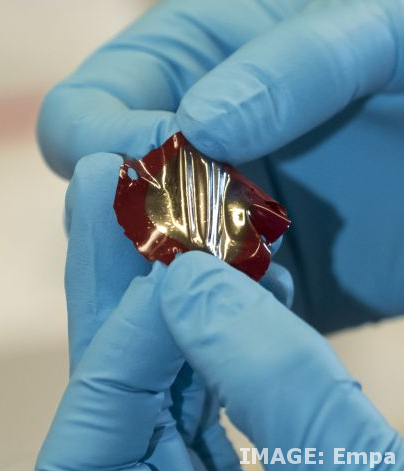Piezo power made malleable
 Researchers have developed a flexible material that generates electricity when stressed, which could be used in a range of futuristic applications.
Researchers have developed a flexible material that generates electricity when stressed, which could be used in a range of futuristic applications.
Clothes that generate power or implants that can power themselves are among the proposed uses for the new material, which uses the piezoelectric effect to convert mechanical movements into electrical charges.
The rubbery material has been developed at Empa – the Swiss Federal Laboratories for Materials Science and Technology.
The rubber film has an internal polarisation that changes when it is mechanically stressed, generating current.
It is the same physical phenomenon that has been used for decades to generate a signal in electric guitars and record players.
The piezoelectric effect has for a long time been limited to use by special crystals, but Empa researcher Dorina Opris and her colleagues have now been able to give elastomers piezoelectric properties as well.
The rubber is a composite material made of polar nanoparticles and silicone in the current prototype.
The two materials are specially shaped and connected, yielding a thin, elastic film, with polar moieties of the nanoparticles randomly oriented.
To make it piezoelectric, the team introduces an internal polarisation using a strong electrical field, heating the film until the glass transition temperature of the nanoparticles is exceeded and forcing it to change from a solid, glassy state into a rubbery, viscous one.
This leaves the polar moieties oriented by the electrical field, before the material is cooled back down to room temperature.
The applications for such a material are extensive and diverse, including pressure sensors that that create their own electrical impulses, clothing that can monitor the wearer's activities or generate electricity from their movements, and even a pacemaker that is powered by the movements of the body itself.
“This material could probably even be used to obtain energy from the human body,” says Empa researcher Dorina Opris.
“You could implant it near the heart to generate electricity from the heartbeat, for instance.”







 Print
Print